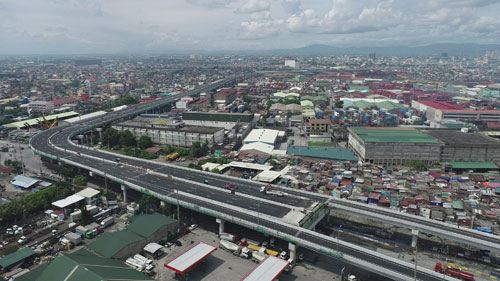Despite the pandemic, the Duterte administration has delivered major infrastructure projects in the aviation, railway, road and maritime sectors, while hundreds of unfinished projects will be turned over to the next administration.
Arthur Tugade,Department of Transportation (DOTr) secretary, presented the legacy projects of the Duterte administration and the initiatives to address transport problems amid the pandemic.
“We may not solve all the transport problems but we have addressed many. Never before in the history of this country has the Department of Transportation done so much, in so short a time, notwithstanding the COVID-19 pandemic, earthquake and typhoons,” Tugade said in his speech at the Duterte Legacy Summit yesterday.
“We delivered.”
Tugade noted the completion of two railway projects last year, and the six projects under construction which include the Metro Manila Subway, Metro Rail Transit line 7 (MRT-7), Light Rail Transit line 1 extension and the Philippine National Railways Clark Phase 1.
Six more projects in the pipeline for implementation of the design and procurement include the Mindanao Railway Phase 1 Tagum-Davao-Digos, which is targeted to start partial operation by 2025, from the initial target of 2022.
DOTr mentioned the improvement of the Ninoy Aquino International Airport and MRT-3 operation and the construction of bike lanes in Metro Manila, Cebu and Davao, among other projects.
Meanwhile, Emil Sadain, Department of Public Works and Highways (DPWH) undersecretary and Build, Build, Build (BBB) chief implementer, said in his speech at the summit the collective efforts of the Infrastructure Cluster allowed to meet the annual public infrastructure spending target of at least 5 percent of gross domestic product (GDP)—from 3.9 percent of GDP in 2016, public infrastructure spending peaked at 5.8 percent in 2021.
“The Build, Build, Build, program was undertaken with an understanding that economic activities cannot be conducted efficiently without adequate infrastructure. The fundamental objective of the program is to invest adequately in infrastructure to support and sustain the country’s growing economic activities represented by its GDP,” Sadain said.
Sadain summarized various infrastructure projects, programs and activities implemented by the different members of the Infrastructure Cluster since 2016.
He mentioned the implementation of the National Broadband Program, with an overall accomplishment rate of 73.5 percent as of March 2022.
The Department of Information and Communications Technology has established 7,977 operational Free Wi-Fi sites in public areas nationwide as mandated by Republic Act 10929, or the Free Internet Access in Public Places Act.
Under water transport, ports were upgraded and modernized including the access roads to ensure reliable inter-island shipping and connectivity.
As of March 2022, 579 commercial/social tourism ports were completed, of which 254 projects are under the DOTr, 239 under the Philippine Ports Authority and 86 projects under the Cebu Port Authority.
However, 163 seaport projects are still ongoing and expected to be completed beyond this year.
In the aviation sector, DOTr has completed 248 projects as of March, while 69 airport projects are ongoing construction.
Sadain said the country’s highways and expressways were expanded to pave the way for regional development and eventually decongest highly urbanized areas.
The construction of the Davao City Bypass Road, which includes the country’s longest road mountain tunnel, is in full swing, he added.
“One game-changing project of DPWH is the Luzon Spine Expressway network program. Once these projects are completed, travel time from Ilocos to Bicol will be reduced from 20 hours to 9 hours,” he said.
Completed projects under this program include the final section of the Tarlac-Pangasinan-La Union Expressway, Plaridel Bypass Road Phase II, North Luzon Expressway Harbor Link Segment 10 and C3-10 Section, Skyway Stage 3 and the Alabang-Sucat Skyway Extension.
Notable accomplishments for the road sector also include the completed road sections of the Central Luzon Link Expressway, Cavite-Laguna Expressway and Manila-Cavite Expressway.
Three major projects under the Metro Manila Logistics Improvement program were completed: the Estrella-Pantaleon Bridge, Bonifacio Global City-Ortigas Center Link Road Project and the recently completed Binondo-Intramuros Bridge.
To date, DPWH has 119 infrastructure flagship projects in the pipeline, of which 12 are completed, 19 are expected to be finished by December this year and 88 projects are slated for completion by 2023 onwards.




